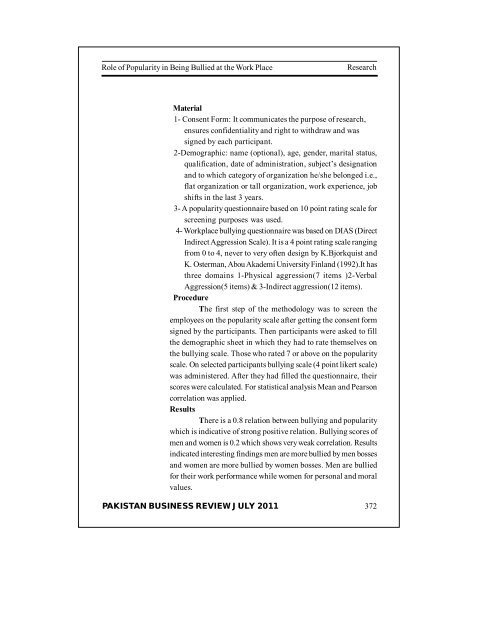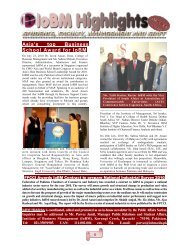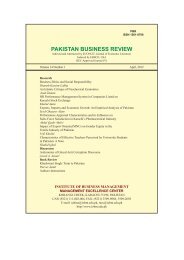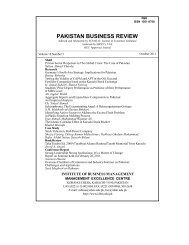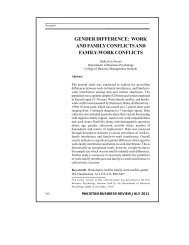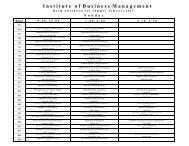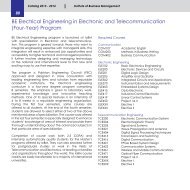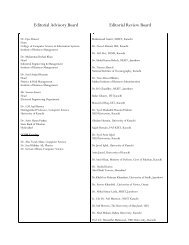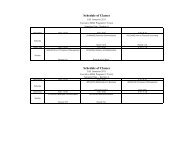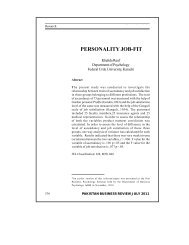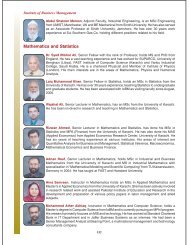PAKISTAN BUSINESS REVIEW - Institute of Business Management
PAKISTAN BUSINESS REVIEW - Institute of Business Management
PAKISTAN BUSINESS REVIEW - Institute of Business Management
You also want an ePaper? Increase the reach of your titles
YUMPU automatically turns print PDFs into web optimized ePapers that Google loves.
Role <strong>of</strong> Popularity in Being Bullied at the Work Place<br />
Research<br />
Material<br />
1- Consent Form: It communicates the purpose <strong>of</strong> research,<br />
ensures confidentiality and right to withdraw and was<br />
signed by each participant.<br />
2-Demographic: name (optional), age, gender, marital status,<br />
qualification, date <strong>of</strong> administration, subject’s designation<br />
and to which category <strong>of</strong> organization he/she belonged i.e.,<br />
flat organization or tall organization, work experience, job<br />
shifts in the last 3 years.<br />
3- A popularity questionnaire based on 10 point rating scale for<br />
screening purposes was used.<br />
4- Workplace bullying questionnaire was based on DIAS (Direct<br />
Indirect Aggression Scale). It is a 4 point rating scale ranging<br />
from 0 to 4, never to very <strong>of</strong>ten design by K.Bjorkquist and<br />
K. Osterman, Abou Akademi University Finland (1992).It has<br />
three domains 1-Physical aggression(7 items )2-Verbal<br />
Aggression(5 items) & 3-Indirect aggression(12 items).<br />
Procedure<br />
The first step <strong>of</strong> the methodology was to screen the<br />
employees on the popularity scale after getting the consent form<br />
signed by the participants. Then participants were asked to fill<br />
the demographic sheet in which they had to rate themselves on<br />
the bullying scale. Those who rated 7 or above on the popularity<br />
scale. On selected participants bullying scale (4 point likert scale)<br />
was administered. After they had filled the questionnaire, their<br />
scores were calculated. For statistical analysis Mean and Pearson<br />
correlation was applied.<br />
Results<br />
There is a 0.8 relation between bullying and popularity<br />
which is indicative <strong>of</strong> strong positive relation. Bullying scores <strong>of</strong><br />
men and women is 0.2 which shows very weak correlation. Results<br />
indicated interesting findings men are more bullied by men bosses<br />
and women are more bullied by women bosses. Men are bullied<br />
for their work performance while women for personal and moral<br />
values.<br />
<strong>PAKISTAN</strong> <strong>BUSINESS</strong> <strong>REVIEW</strong> JULY 2011<br />
372


